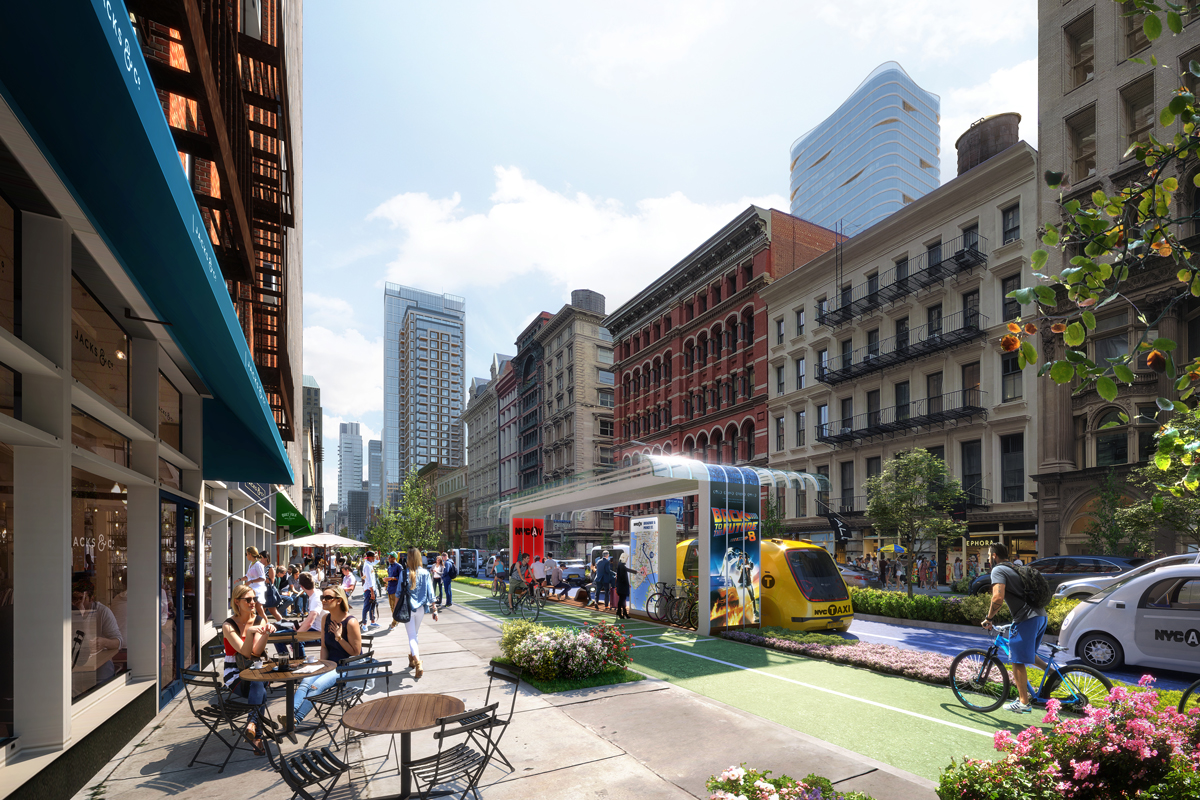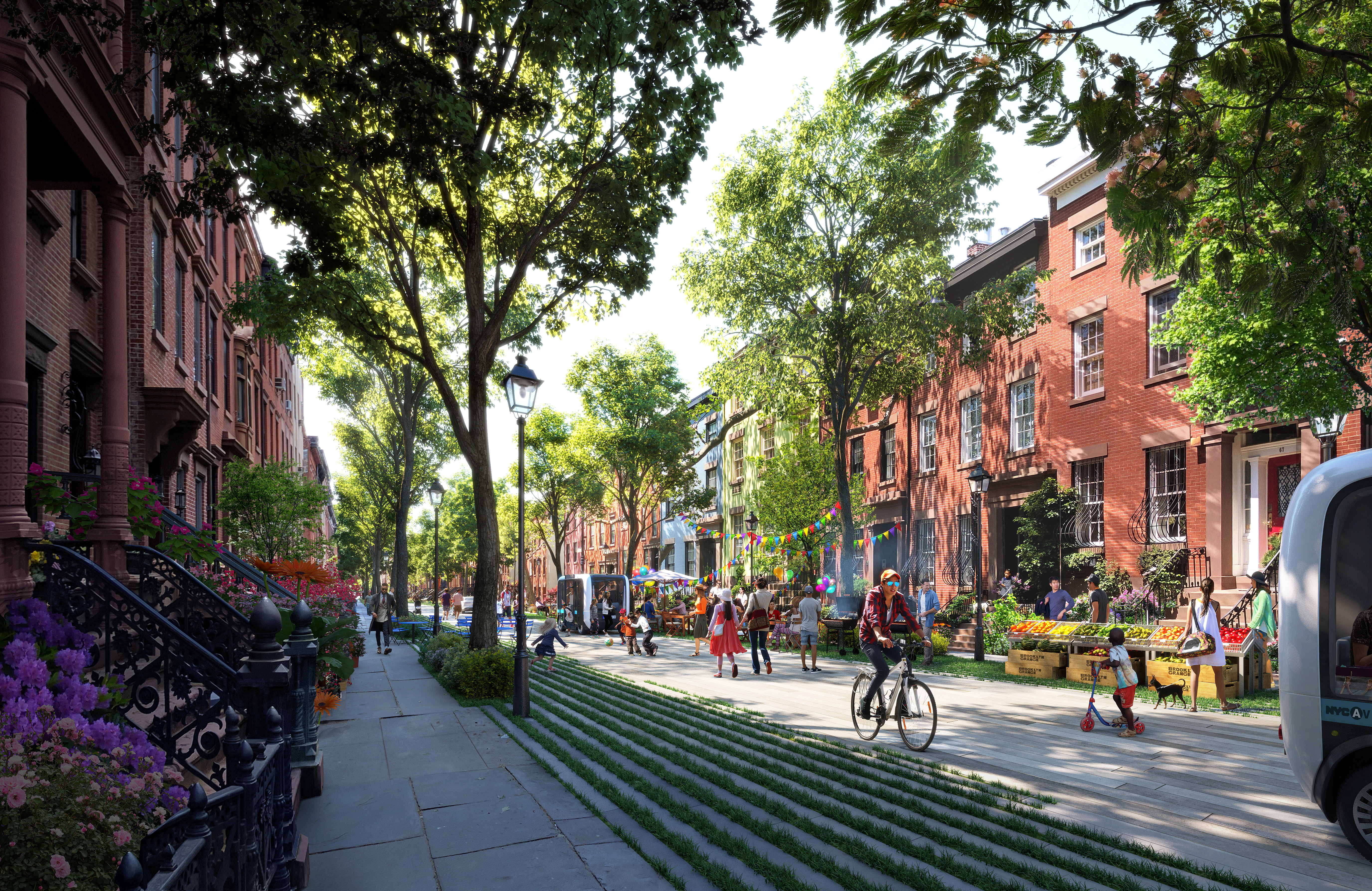
As we question the nature of the urban landscape, we predict a world with renewed public space and a better life for millions of New Yorkers. AV technologies will act as a catalyst, transforming the city into a place of more connection and activity, and redefining what it means to be “urban” for cities around the world.
We propose a network of AV corridors that will proliferate throughout the five boroughs, enabling New York to offer more equitable and effective transit, and redesign its streets for the comfort and benefit of its citizens. AV routes can act as a complement to existing transportation services, and connect to many areas of the city that are currently underserved.
AVs operate with a vastly different set of assumptions than today’s cars, using advanced communication technologies that make them more efficient and safe. Their enhanced predictability will eventually allow entire lanes of traffic to be eliminated from the current streetscape, opening the space up for sidewalks and public use. New street typologies will be designed to accommodate the new infrastructure and allow New York to reprioritize the pedestrian and add acres of green space.
The key to a more equitable New York is a new model for public transit—one that unlocks the potential for autonomous vehicles (AVs).
A reinvention of public transportation requires thorough understanding of all of the city’s intricacies and a design approach that is far outside of the box. With leading specialists at IBM, Arup and MIT, KPF is working to develop urban data and performance analytics and machine learning models to evaluate the opportunities for an integrated AV transit system. With greater knowledge about population densities, demographics, traffic patterns, street geometries, and subway capacity, we can explore the number of people a new system can support, density and growth factors, and ideal trip distances.

AV technologies will return city streets to New Yorkers and support stronger communities (Kohn Pedersen Fox)
Moreover, we can analyze the possibilities for street redesign, implementation and phasing, and land use changes across the city. Improved accessibility will dramatically alter land use and development trends citywide. Commercial and manufacturing can be paired with residential zones, connected by AV corridors that alleviate long and inefficient commutes. This new approach to mobility may lead us to adjust zoning policies and encourage a more balanced distribution of growth.
With the advent of AVs, New York can implement a new street design and zoning strategy that offers the most value for its most important asset—its people.
—